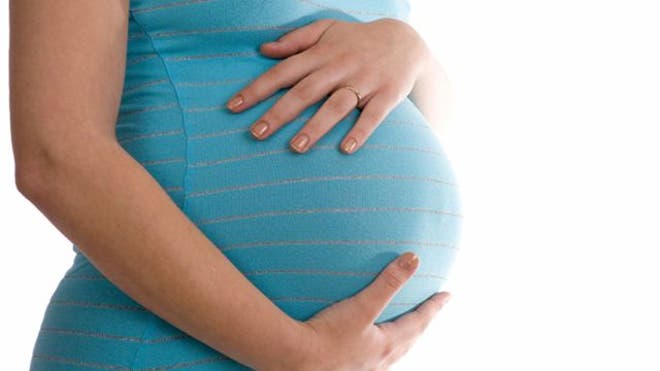
The percentage of women diagnosed with gestational diabetes is increasing in the United States and the American Diabetes Association estimates that it will occur in up to 18 percent of all pregnancies.
Experts agree that it’s not just a problem during pregnancy; it can actually cause a lifetime of complications in both mothers and their children.
Learn what the latest research on gestational diabetes suggests and what you can do to prevent and manage it.
Are you at risk?
Gestational diabetes is a medical condition that causes blood sugar levels to rise during pregnancy. When you eat, the food is converted to glucose, which the body uses for energy. But the only way glucose gets into the cells is through insulin, and when the cells become resistant to insulin, diabetes occurs.
Gestational diabetes can be genetic and some ethnic groups – American Indian, African American, Asian, and Hispanic – are more prone. Women over the age of 25, and especially those over 35, have a higher risk.
If you had a baby who weighed more than 9 pounds, even if you were never diagnosed with gestational diabetes, chances are you could have it during your next pregnancy.
Some studies show that 50 percent of women who have gestational diabetes have no other risk factors. Yet experts agree that lifestyle is the most important predictor.
“More people are going into pregnancy overweight,” said Dr. Danine Fruge, director of women’s health and family medicine at the Pritikin Longevity Center and Spa in Miami, Fla.
If you’re overweight or obese, your chances of having gestational diabetes is two and four times higher, respectively, than a woman at a normal weight, according to a report in the journal Diabetes Care. If you smoke, your chances double.
Many women who aren’t diabetic going into pregnancy may still have metabolic syndrome and insulin resistance – risk factors they may not have had if they had a normal body mass index (BMI), Fruge said.
Health problems for moms and babies
During pregnancy, moms with gestational diabetes can also have high blood pressure, preeclampsia and eclampsia.
And because babies born to moms with the condition also have elevated blood sugar levels, they’re likely to be overweight, which can cause birth complications, interventions, and can up the chances of having a cesarean section.
After birth, when insulin starts to kick in and the baby’s blood sugar drops, the infant is at risk for seizures, jaundice, polycythemia vera, low calcium and low magnesium, according to Dr. Timothy Morley, medical director for Women’s Healthy Hormones and Founder of BodyLogicMD in New York City. However, these conditions are very rare.
A lifelong condition
Gestational diabetes goes away after giving birth, but its effects on both mom and baby can last a lifetime.
Women with gestational diabetes are at risk for high blood pressure, type 2 diabetes and heart disease. By age 50, women who had gestational diabetes have a 26 percent higher 10 year-risk for heart disease, according to a recent study in the journal Circulation.
“You are not out of the woods just because you’re not pregnant anymore,” Fruge said.
Your baby may also face high blood pressure, heart problems, and diabetes, and he or she is more likely to be overweight or obese later on in life.
If you’re at risk for gestational diabetes, the good news is that there are things you can do to prevent and manage it now:
Lower your BMI
“Before you’re pregnant, lose weight.” Morley said. If you had a baby that was more than 9 pounds, ask your doctor about pre-family planning for your next pregnancy, which can help you get your weight under control.
Monitor your blood sugar
If you have gestational diabetes, daily blood sugar monitoring at home is what will determine how healthy your pregnancy will be, according to Fruge.
Clean up your diet
Before, during and after pregnancy, limit processed foods, salt and sugar – and focus on eating fresh fruits and vegetables, whole grains, lean protein and healthy fats. Your doctor can refer you to a medical nutrition therapist who can help you with a diet plan and set healthy pregnancy weight gain goals.
Exercise
Thirty minutes of exercise five to six days a week before pregnancy is important, but if you have gestational diabetes, you should exercise up it to seven days a week. “Your body is having tremendous difficulty doing its daily work, and exercise is such an incredible helper to using the blood sugar for energy,” Fruge said. Be sure to talk to your doctor about the type of exercise and intensity that’s right for you
Source: Heal con




 For pregnant women who want to quit smoking, a brisk walk can temporarily stave off tobacco cravings, says a Canadian study.
For pregnant women who want to quit smoking, a brisk walk can temporarily stave off tobacco cravings, says a Canadian study. A new study has suggested that that women who have taken oral contraceptives for three or more years are twice as likely to suffer from glaucoma, one of the leading causes of blindness which affects nearly 60 million worldwide.
A new study has suggested that that women who have taken oral contraceptives for three or more years are twice as likely to suffer from glaucoma, one of the leading causes of blindness which affects nearly 60 million worldwide.


